What causes a control process error in Mitsubishi Electric MELSERVO-J4 Amplifier?
- ZzjonesSep 1, 2025
A control process error in your Mitsubishi Electric Amplifier can be due to control process errors 1 through 10.

What causes a control process error in Mitsubishi Electric MELSERVO-J4 Amplifier?
A control process error in your Mitsubishi Electric Amplifier can be due to control process errors 1 through 10.
What does an absolute position erased error mean on Mitsubishi Electric MELSERVO-J4 Amplifier?
An 'absolute position erased' error in your Mitsubishi Electric Amplifier indicates that the absolute position has been erased from either the servo motor encoder or the scale measurement encoder.
What causes an encoder initial communication error 1 in Mitsubishi Electric MELSERVO-J4 Amplifier?
An encoder initial communication error 1 in your Mitsubishi Electric Amplifier may be due to: * Receive data errors 1, 2, or 3. * Transmission data errors 1, 2, or 3. * Process errors 1, 2, 3, 4, 5, or 6.
What does an encoder initial communication error 2 mean on Mitsubishi Electric MELSERVO-J4 Amplifier?
An encoder initial communication error 2 on your Mitsubishi Electric Amplifier indicates an encoder malfunction or a load-side encoder malfunction.
| Series | MELSERVO-J4 |
|---|---|
| Full-closed Control | Supported |
| Advanced One-touch Tuning | Supported |
| Real-time Adaptive Tuning | Supported |
| Vibration Suppression Control | Supported |
| Communication Interface | SSCNET III/H |
| Safety Functions | STO (Safe Torque Off), SS1 (Safe Stop 1), SS2 (Safe Stop 2), SBC (Safe Brake Control) |
| Protection Functions | Overcurrent, Overvoltage, Overload, Overheat, Encoder Error, Regenerative Error |
| Ambient Temperature | 0°C to +55°C |
| Vibration Resistance | 5.9 m/s² (0.6G) at 10 to 55 Hz |
| Feedback System | Absolute/Incremental Encoder, Resolver |
Example of I/O signal connections for point table and program methods.
Details of connectors and their pin assignments.
Explanations of input and output signals and their functions.
Explanation of analog override function for speed control.
Details on various interfaces.
Procedure and timing chart for powering on the servo amplifier.
Transition of display modes and their functions.
Displays servo status during operation on a 7-segment LED.
Displays diagnosis contents and allows changing display data.
Displays current alarms, alarm history, and parameter/point table errors.
Procedures for setting target position, speed, and other parameters in point tables.
Procedures for changing parameter settings.
Test operation mode for checking servo operation.
Procedures for powering on and off the servo amplifier.
Setting point tables and starting operation using signals or communication.
Adjusting position using JOG or manual pulse generator.
Explanation of home position return methods and types.
Using roll feed display function to change position displays.
Steps to set point tables using MR Configurator2.
Procedures for powering on and off the servo amplifier.
Selecting and starting a program using input signals or communication.
Shifting position using JOG or manual pulse generator.
Explanation of home position return methods and types.
Operating servo amplifier using RS-422 communication.
Using the incremental value command method.
Method for setting programs using MR Configurator2.
Procedures for powering on and off the servo amplifier.
Conditions under which the servo motor stops.
Steps to confirm normal operation of the machine.
Necessary parameter settings for the indexer method.
Positioning execution by selecting stations using DI devices.
Executing positioning to a station in a fixed direction.
Automatically changing rotation direction to shortest distance for positioning.
Shifting position using station JOG or JOG operation.
Explanation of home position return methods and types.
Safety precautions for I/O signals, torque limit, test operation, and deceleration.
Lists all parameters and their basic settings.
Basic setting parameters for operation mode and electronic gear.
Parameters for gain and filter settings, including vibration suppression.
Parameters for extension settings, including S-pattern and speed/torque control.
Parameters for input device and output device selections.
Parameters for fully closed loop control functions.
Parameters for drive recorder, vibration tough drive, and SEMI-F47 function.
Parameters for linear servo motor and DD motor settings.
Parameters related to positioning control, including command mode and home position return.
How to set electronic gear settings.
Setting software limits for stopping shaft motion.
Selecting servo motor stop method when LSP or LSN is off.
Selecting stop method when software limit is detected.
Comprehensive list of alarms with details, stop methods, and alarm codes.
List of warnings with details and stop methods.
Details about the MR-HDP01 manual pulse generator.
Lists communication commands and their corresponding data numbers.
Detailed explanations of communication commands.
Relevant matters for monitoring information compatible with previous models.
Input signal mapping for different control modes based on [Pr. PT01].
Shows external appearance and explains keys.
Technical specifications of the parameter unit.
Physical dimensions of the parameter unit.
How to connect the parameter unit to the servo amplifier.
How the parameter unit displays information and transitions between modes.
Procedures for setting station number, baud rate, and contrast.
How to monitor servo status and display various information.
Procedures for displaying alarms, alarm history, I/O signals, and diagnosis.
Procedures for setting parameters.
Procedures for setting point table data.
Executing test cancel, JOG, positioning, forced output, and single-step feed.
Information on warranty period and what is covered.
Specifies the warranty period.
Lists cases where repair costs will be charged.
Guidelines for product application and recommended uses.
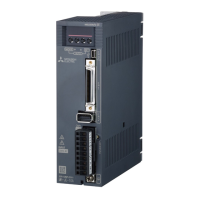
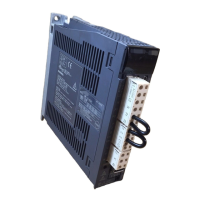

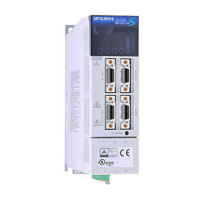

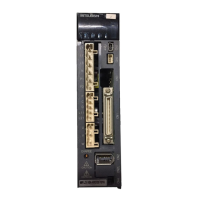

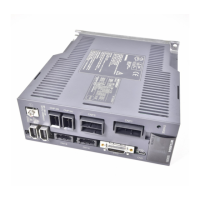
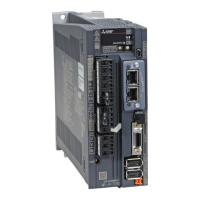

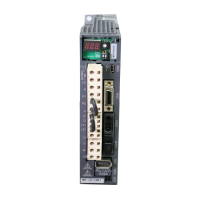
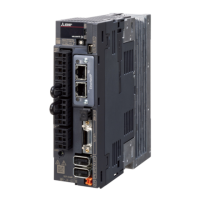
